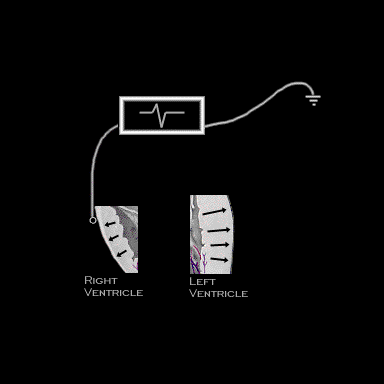
If the ventricles were excited simultaneously, the signal recorded by a unipolar electrode placed over the surface of the right ventricle would reveal first a small positive deflection and then a larger negative deflection. The initial positive portion would reflect the closer proximity of the electrode to the right ventricular wall. The larger negative portion would reflect the greater muscle mass of the left ventricle and the fact that a portion of the left ventricular epicardial surface would be depolarized after the right ventricle had completed its depolarization and would therefore be unopposed.
